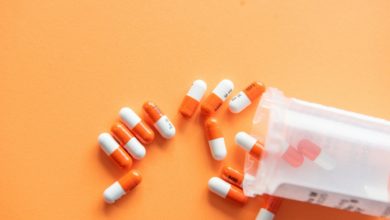Netflix Is Going Off Script: Music Shows, Live Events, and the Unscripted Gold Rush

Netflix (NASDAQ:NFLX), once the pioneer of on-demand prestige drama, is now writing a new chapter in its content playbook—and it’s anything but scripted. As the streaming giant aims to double revenue and triple operating income by 2030, it's making a significant push into music competitions, celebrity interviews, global talent shows, and real-time events. Recent developments highlight Netflix's talks with Spotify for a potential music awards show or concert series, a reboot of the iconic “Star Search,” and new programs like “Building the Band” hosted by Backstreet Boys’ AJ McLean. The streamer is also exploring shorter-turnaround documentaries, daily pop culture content in partnership with outlets like the Daily Beast, and even experimenting with live sports and game shows. With an ad-supported tier driving demand for family-friendly and broadly appealing content, Netflix’s unscripted pivot reflects its ambition to broaden engagement across global demographics and reinforce its standing as a complete home entertainment hub.
Strategic Pivot to Music-Centric Unscripted Shows
Netflix is leaning heavily into music-driven unscripted content, aiming to capture a global audience segment historically tied to cable TV and network talent competitions. Its reboot of “Star Search” and the launch of “Building the Band”—a hybrid between “Love Is Blind” and “The Voice”—signal a calculated entry into the music entertainment vertical. These shows feature unique twists, such as band members meeting only after being selected, enhancing the intrigue factor for viewers. Netflix is reportedly also exploring collaborative ventures with Spotify, potentially leading to co-branded music award shows and live concert events. This strategy capitalizes on music’s global resonance and taps into underserved consumer demand for fresh, culturally diverse performance-based content. Moreover, music competitions tend to encourage recurring engagement as audiences tune in weekly, vote, and develop emotional connections with contestants. This regular cadence helps reduce churn and increases time spent on the platform—critical metrics as Netflix scales its advertising tier. In an environment where every minute of viewer attention counts, music-based formats provide a highly repeatable and localization-friendly structure that can be adapted across different regions and languages. From Korean pop to Latin American talent, the genre has scalable potential for regional adaptations, which could become vital levers in subscriber acquisition across emerging markets. The global nature of music also provides Netflix with licensing flexibility and merchandising opportunities, adding further monetization angles.
Expanding Live Programming with Measured Intent
Netflix’s content strategy now includes a selective but deliberate entry into live programming, anchored by both sports and cultural events. While live content remains a small fraction of total view hours, Netflix is strategically leveraging it to drive user acquisition and social media buzz. Events like the Tyson–Paul boxing match and the NFL Christmas Day games have proven successful in drawing large audiences, even though some earlier live experiments had technical glitches. Learning from those experiences, Netflix now emphasizes live programming only when it serves a purpose, such as fan voting for unscripted contests or capturing real-time cultural relevance. This measured approach extends to music and sports alike: the streamer is preparing for another NFL double-header this Christmas and broadcasting the highly anticipated Taylor–Serrano boxing rematch, which follows the most-watched women’s sporting event in U.S. history. Netflix also hinted that future finales of unscripted series like “Building the Band” or “Star Search” could be aired live to maximize user participation. The company’s foray into live isn’t just about viewership—it’s a strategic hedge against competitors in the traditional TV and YouTube ecosystems, which still dominate live event territory. Furthermore, Netflix’s growing control over its proprietary ad tech means it can monetize live programming more effectively through dynamic ad placement and real-time analytics, further enhancing advertiser appeal. All in all, live content gives Netflix a differentiating edge while opening new revenue streams without fundamentally altering its on-demand DNA.
Local Productions with Global Impact
Netflix’s production investments continue to go global, with a sharp focus on creating locally relevant, unscripted content that resonates across borders. The company has committed over $1 billion to content in Mexico, $2.5 billion in Korean productions, and maintains operations in 50 different countries. These investments aren’t just for optics—they are a core part of Netflix’s strategy to drive regional subscriber growth and engagement. Shows like “Million Dollar Secret,” Netflix’s take on “Survivor,” and regionally tailored game shows or dating formats help anchor the streaming service as culturally attuned in international markets. These types of shows often have strong rewatch and family co-viewing value, which plays well for the ad-supported plan’s audience profile. Local productions also help Netflix comply with regulatory frameworks like content quotas and taxation requirements in different countries while enabling it to portray cultural narratives that can travel well globally. For example, Squid Game was initially a regional production that turned into a global phenomenon. Netflix is betting that replicating this success across multiple genres, including unscripted and live formats, will serve as a flywheel to grow its international base, which still has hundreds of millions of untapped potential users. With local content comes local loyalty, and that’s something few global competitors can easily replicate at Netflix’s scale and speed.
Building a Diverse Non-Scripted Slate to Support Ad-Supported Growth
Netflix’s growing ad-supported tier has become a key driver for expanding its nonfiction and unscripted offerings. These types of programs, especially game shows and reality series, are typically more cost-effective to produce, offer quick turnaround times, and yield high engagement across varied demographics. Netflix executives have cited strong retention and stability in user behavior, even amid macroeconomic uncertainty. This stability provides a sound foundation to expand its content diversity further. With offerings like Neil Patrick Harris’s trivia-based show “What’s in the Box,” Netflix is targeting casual viewers who may not binge scripted dramas but will reliably tune in for light entertainment. Moreover, the shorter production cycles of unscripted content allow the streamer to react to cultural moments or viral trends faster—something Netflix is testing via a pilot with the Daily Beast for buzz-worthy nonpolitical news content. These shows can be slotted into off-peak periods to maintain engagement between major scripted releases and function as experimental formats for advertiser interest. With its own first-party ad tech now live in the U.S. and Canada, Netflix has more control over how it sells and delivers advertising inventory in such content. From enhanced targeting to personalized ad recommendations, these capabilities help unlock the true monetization potential of unscripted TV. It also allows the platform to scale without proportionally increasing content costs, a crucial factor in maintaining margins while growing its user base.
Conclusion: Balancing Aspirations With Execution Risk
Source: Yahoo Finance
As we can see in the above chart, Netflix has had a dream run on Wall Street over the past four months and its solid recovery has propelled its LTM EV/ Revenue multiple from 8.6x in June 2024 to almost 14x today. We believe that the company’s push into music shows, live programming, and unscripted TV marks a significant evolution from its roots in premium scripted content. These new formats could broaden its appeal, deepen engagement, and support the growth of its advertising business. Strategic investments in global productions and first-party ad technology add further momentum to this shift. It will be interesting to see how the Netflix management tackles with the execution risk, rising content spend, and macroeconomic uncertainties as it pivots into more diversified content territory.




